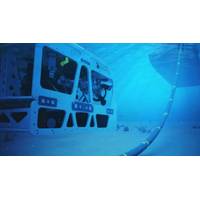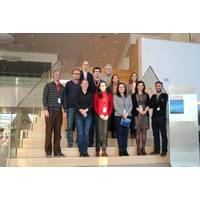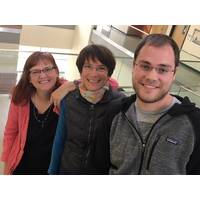
Simple-to-use eDNA Test Will Help Track Marine Species
play.”What is eDNA metabarcoding?DNA, or deoxyribonucleic acid, is genetic material found in the cells of almost all organisms. It takes the physical structure of a twisted ladder, or double helix. The precise sequence of four nucleotide bases that make up the “rungs” of the ladder encode all of the instructions needed for an organism to develop, survive and reproduce. Genetic scientists have learned to decode the order of these nucleotides, a process called genetic sequencing, which provides a genetic fingerprint of the organism.The eDNA revolution emerged from the recognition that

VIDEO: Barcode Tags Could Cut Subsea Pipeline Inspection Costs
A pipeline inspection solution combining subsea drones and the use of visual markers - barcodes - on the pipelines themselves could drive down the costs of subsea pipeline inspections.The solutions is being developed by tubular solutions firm Vallourec, smart robotics and visual positioning start-up Forssea Robotic, and subsea positioning and inertial navigation firm iXblue.According to the companies involved, the solution would remove the need for surface vessels, which are traditionally used in pipeline inspection projects.Surface vessels with acoustic positioning are traditionally used to monitor

SRO Solutions Upgrades IBM Maximo for FPSO Player MODEC
, including service requests, work orders, purchase requisitions, requests for quotations, purchase orders and deferrals. It also built in a feature to record shipping manifests to track outbound and inbound deliveries and a label printing function so that all items received are automatically given a barcode," SRO said.The projects for MODEC took more than 1,300 hours to implement and saw SRO delivering staff training on the new system, SRO said.SRO senior consultant Jonathan Ritchie, who led the projects, said: “The business processes MODEC was working under were not fit for purpose, with

Maritime Blue-Light Laser Discovered
to generate, control and detect photons – an elementary particle of light carrying energy. It can be used to concentrate beams for cutting and welding as well as 3D scanning and surgical applications, through to more ‘ordinary’ applications, such as presence detection for door control, bar code scanning and printers.The global photonics market is expected to surpass $688 billion in 2020. Between 2005 and 2015, it showed a real annual growth rate of 7pc, which is twice as fast as global GDP growth and higher than many other sectors including food (2pc) and automotive (3-5pc).Ms Vila said

We [Heart] Actinobacteria
in our heart for a long time for the freshwater actinobacteria.” The relationship began back in 2007, with Ryan Newton, one of McMahon’s first Ph.D. students. Newton, who’s now an assistant professor with the UW-Milwaukee School of Freshwater Sciences, developed a baseline bar code of actinobacterial RNA sequences that allows researchers to track, classify and enumerate bacteria in lakes. Using that code, Newton and McMahon demonstrated that actinobacteria are the predominant species in inland lakes. In 2012, McMahon’s lab used a cutting-edge method to
SUPR-REMUS: The Next Generation of Plankton Sampling
in coastal ocean waters, taking into account environmental parameters. The sampling system combines three cutting edge technologies—an adapted Suspended Particulate Rosette (SUPR) multi-sampler, a REMUS autonomous underwater vehicle equipped with sensors, and identification of organisms by DNA barcode analysis. The main objectives of the study were to couple the Suspended Particulate Rosette sampler (SUPR), designed by co-author Chip Breier for deep sea biogeochemical sampling, with a REMUS 600, and use this system to obtain the vertical distribution of barnacle larvae in Buzzards Bay. &ldquo



 February 2024
February 2024





